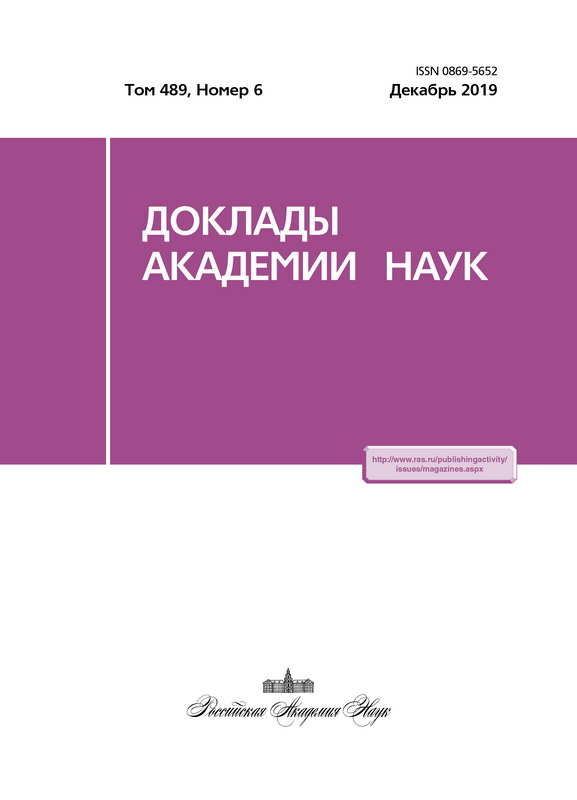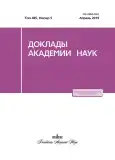Мультиизотопный состав серы сульфидов и микрофоссилии мезоархейского колчеданного рудопроявления Лекса Карельского кратона: новые данные о роли абиогенных и биогенных факторов при формировании древнейших руд
- Авторы: Высоцкий С.В.1, Ханчук А.И.1, Кулешевич Л.В.2, Игнатьев А.В.1, Слабунов А.И.2, Веливецкая Т.А.1
-
Учреждения:
- "Дальневосточный геологический институт" Дальневосточного отделения Российской академии наук
- Институт геологии Карельского научного центра Российской Академии наук
- Выпуск: Том 485, № 5 (2019)
- Страницы: 599-603
- Раздел: Геохимия
- URL: https://journals.eco-vector.com/0869-5652/article/view/14306
- DOI: https://doi.org/10.31857/S0869-56524855599-603
- ID: 14306
Цитировать
Аннотация
Приводятся первые данные о мультиизотопном составе серы сульфидов и фоссилизированных микроорганизмах, впервые обнаруженнных в мезоархейских (около 2,9 млрд лет) СКМ Карельского кратона. В результате детального электронно-микроскопического и микрозондового исследования выявлено присутствие в осадочных породах рудопроявления Лекса нескольких разновидностей предполагаемых микрофоссилий - силикатных кокоидов, пирит-марказитовых сфероидов и полых трубок. Показано, что изотопный состав серы коррелирует с типоморфными особенностями сульфидов, их составом и свидетельствует о существенном участии осадочной серы в колчеданном рудообразовании. Процесс осаждения сульфида железа происходил при активном биологическом участии.
Ключевые слова
Об авторах
С. В. Высоцкий
"Дальневосточный геологический институт" Дальневосточного отделения Российской академии наук
Автор, ответственный за переписку.
Email: vysotskiy@fegdi.ru
Россия, 690022, г. Владивосток, пр-т 100-лет Владивостоку, д.159
А. И. Ханчук
"Дальневосточный геологический институт" Дальневосточного отделения Российской академии наук
Email: vysotskiy@fegdi.ru
Академик РАН
Россия, 690022, г. Владивосток, пр-т 100-лет Владивостоку, д.159Л. В. Кулешевич
Институт геологии Карельского научного центра Российской Академии наук
Email: vysotskiy@fegdi.ru
Россия, 185910, г. Петрозаводск, ул. Пушкинская, д.11
А. В. Игнатьев
"Дальневосточный геологический институт" Дальневосточного отделения Российской академии наук
Email: vysotskiy@fegdi.ru
Россия, 690022, г. Владивосток, пр-т 100-лет Владивостоку, д.159
А. И. Слабунов
Институт геологии Карельского научного центра Российской Академии наук
Email: vysotskiy@fegdi.ru
Россия, 185910, г. Петрозаводск, ул. Пушкинская, д.11
Т. А. Веливецкая
"Дальневосточный геологический институт" Дальневосточного отделения Российской академии наук
Email: vysotskiy@fegdi.ru
Россия, 690022, г. Владивосток, пр-т 100-лет Владивостоку, д.159
Список литературы
- Бортников Н. С., Викентьев И. В. // Геология руд. месторождений. 2005. Т. 47. № 1. С. 16-50.
- Huston D. L., Brauhart C. W., Drieberg S. L., et al. // Geology. 2001. V. 29. № 8. P. 687-690.
- Farquhar J., Wu N. P., Canfield D. E., et al. // Econ. Geol. 2010. V. 105. № 3. Р. 509-533.
- Слабунов А. И., Лобач-Жученко С.Б., Бибикова Е. В. и др. // Геотектоника. 2006. № 6. С. 3-32.
- Кулешевич Л. В., Фурман В. Н., Федюк З. Н. // Геология и полезные ископаемые Карелии. Петрозаводск, 2005. В. 8. С. 50-67.
- Puchtel I. S., Hofmann A. W., Amelin Yu.V., et al. // Geochim. et Cosmochim. Acta. 1999. V. 63. № 21. P. 3579-3595.
- Schidlowski M. // Nature. 1965. V. 205. P. 895-896
- Ignatiev A. V., Velivetskaya T. A., Budnitskiy S. Y., et al. // Chem. Geol. 2018. V. 493. P. 316-326.
- Ono S., Eigenbrode J. L., Pavlov A. A., et al. // Earth and Planet. Sci. Lett. 2003. V. 213. P. 15-30.
- Canfield D. E., Farquhar J., Zerkle A. L. // Geology. 2010. V. 38. P. 415-418.
- Halevy I. // Proc. Nat. Acad. Sci. USA. 2013. V. 110. № 44. P. 17 644-17 649.
- Астафьева М. М., Герасименко Л. М., Гептнер А. Р. и др. Ископаемые бактерии и другие микроорганизмы в земных породах и астроматериалах. М.: ПИН РАН, 2011. 172 с.
- Медведев П. В., Светов С. А., Светова А. И. // Тр. Карел. науч. центра РАН. 2014. № 1. С. 135-147.
- Merino E., Harvey C., Murray H. H. // Clays and Clay Minerals. 1989. V. 37. № 2. P. 135-142.
- Konhauser K. O., Phoenix V. R., Bottrell S. H., et al. // Sedimentology. 2001. V. 48. P. 415-433.
Дополнительные файлы








